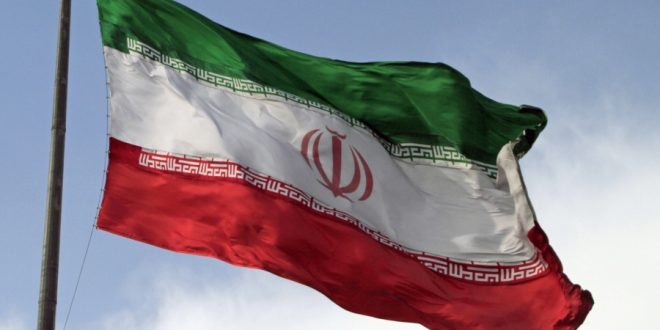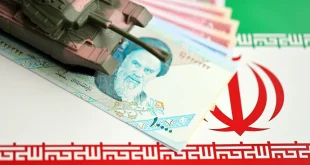Iran’s mismatch between energy supply and consumption has led to industrial power outages and blackouts for residential users, leading to increased poverty, economic losses and social unrest.
The mismatch between energy production and consumption in Iran has made it difficult for the government to provide power to different users. As a result, industrial power outages have grown from one to two days per week, while blackouts for residential users are becoming more frequent and severe. Iran is enduring a severe power outage, which is being made worse by other important factors:
Not enough generation
Iran has a 90,000 MW nominal power generation capacity, however only around 75,000 MW of that real capacity is usable because of old and inefficient power plants. When the summer’s peak demand occurs, this causes a 20% shortfall, or around 14,000 MW, to occur.
Iran’s energy generation industry is mostly dependent on outdated gas and steam turbine plants as opposed to more modern and effective combined-cycle facilities. Increased operational costs, a worsening of the environment, and more frequent power outages result from this lack of modernisation. Even while there are obvious advantages, the government’s poor investment in modernising infrastructure makes it more difficult for the nation to satisfy its expanding energy needs and impedes economic growth.
Low renewables utilisation
Iran generates less than 1% of its total power from renewable sources, with a capacity of only 879 MW. This emphasises how heavily dependent the nation is on fossil fuels. The notable 14,000-MW electricity shortage during the summer’s peak demand emphasises how urgently investments in renewable energy and modernisation of the nation’s antiquated power infrastructure are required. Iran may lessen its dependency on fossil fuels, cut greenhouse gas emissions, and improve energy security by growing its renewable energy industry.
Iran’s electricity prices are among the lowest globally due to the availability and low extraction cost of natural gas. This has led to a surge in bitcoin mining, a practice many Iranians use to pay for goods and services despite a government crackdown. While blackouts in January 2020 were attributed to grid pressure, some social media speculated about a possible “cyberattack” on Iran’s electricity infrastructure. However, these claims remain unsubstantiated by any official or independent sources.
Outdated transmission, distribution infrastructure
Approximately 13% of Iran’s generated power is lost during transmission and distribution due to an outdated and ineffective system. This inefficiency makes it more difficult to satisfy the nation’s power demands and is equal to the whole amount of energy used by the Iranian steel sector.
Poor governance and management
The energy issues facing Iran are made worse by the government-controlled energy sector’s ineffective administration and bad management. Efficient protocols for making decisions, inadequate technical knowledge among authorities, and a widespread absence of responsibility have hindered innovation, postponed crucial infrastructure enhancements, and slowed down the assimilation of contemporary technology. Because of this, the energy sector is still inefficient, which impedes attempts to attain sustainable energy and economic stability and frequently results in blackouts. To solve these problems, extensive changes that improve governance, accountability, and decision-making at all levels of the energy industry are required.
Impact on industry
In order to make up for gas shortages, Iran has utilised low-quality Mazut fuel in its power plants, which has seriously harmed the environment. An additional $6–$8bn is thought to be lost to the nation each year as a result of industrial sector power disruptions. These persistent energy-related problems, according to the International Monetary Fund, will lead Iran’s GDP to keep falling. Widespread power disruptions have negatively impacted Iran’s industrial sector. Steel firms have suffered a 2mn-tonne decline in output as a result of reducing their daily gas use from 40 to 15mn cubic metres. Gas shortages also affect cement plants. The World Bank and IMF estimate that the crisis would cost Iran between $6-8 per year, halting GDP growth and causing the rial to depreciate from 260,000 to 540,000 per US dollar. Exports other than oil, particularly steel, have dropped by $7-8bn.
Solutions to Iran’s energy crisis
Increasing the generation of renewable energy is necessary to address Iran’s electricity shortfall. Plans call for investing $8.3 billion to increase solar capacity to 15,000 MW. Iran wants 20,000 MW and 50,000 MW of renewable energy by 2027 and 2031, respectively. Iran already has 38 solar facilities with a combined capacity of 164 MW and 11 wind farms with a capacity of over 350 MW. Making the switch from inefficient thermal plants to combined-cycle ones can reduce fuel use and boost energy output. Crucial actions include regulating demand through updated pricing and conservation measures, as well as upgrading grid infrastructure to reduce 13% transmission losses.
Governance and international cooperation
It is crucial to enhance accountability and governance in Iran’s energy industry. Reforms are required because problems like poor management and monitoring make the issue worse. International cooperation is essential for gaining access to information and technology, notwithstanding financial and technological obstacles. Cooperation on nuclear safety with Saudi Arabia and other regional allies might boost trust. A thorough plan that addresses demand management, infrastructure, generation capacity, governance, and international cooperation is necessary for long-term solutions.
Social impact
Households are greatly impacted by the electrical problem, particularly in the winter. Power outages affect vulnerable groups including elderly and isolated communities, disrupting everyday life and services. Widespread socio-political discontent is reflected in protests against irregular energy delivery. Increased inequality, job losses, and worsened poverty as a result of inflationary pressures are among the negative economic effects. Damage to the environment, a decline in public confidence, and missed possibilities for growth are some long-term consequences. A strategy that prioritises underlying causes and vulnerable populations is necessary to address these difficulties.
Conclusion
If Iran is able to come to an agreement with the US about its nuclear programme and formally join the FATF, it might provide complete answers for its electrical issue under the Masoud Pezeshkin administration. Significant social, economic, and environmental effects have resulted from this crisis, with low-income households and vulnerable people bearing the brunt of these effects. Widespread power outages have increased poverty and inequality, caused economic losses, and sparked social unrest. Iran must make investments to update its infrastructure for generating electricity, increase the capacity of renewable energy sources, enhance governance, control domestic electricity consumption, and pursue international collaboration to overcome these obstacles. Iran can only guarantee the long-term energy security, economic stability, and social well-being of its people by adopting a diverse and inclusive strategy.
It will cost a lot of money to upgrade outdated power plants, incorporate cutting-edge technology into the energy industry, and support renewable energy sources like wind and solar power to meet these goals. Iran can lessen its effect on the environment and increase its energy resilience against upcoming problems by diversifying its energy mix and lowering its reliance on fossil fuels. Enhancing the energy sector’s governance and transparency will also be essential for boosting investor confidence, drawing in foreign capital, and putting into practice sensible policies that put fair access to power for all societal groups first. International collaboration will be essential to improving Iran’s energy infrastructure and advancing global sustainable development goals, especially in the areas of technology transfer and information exchange.





